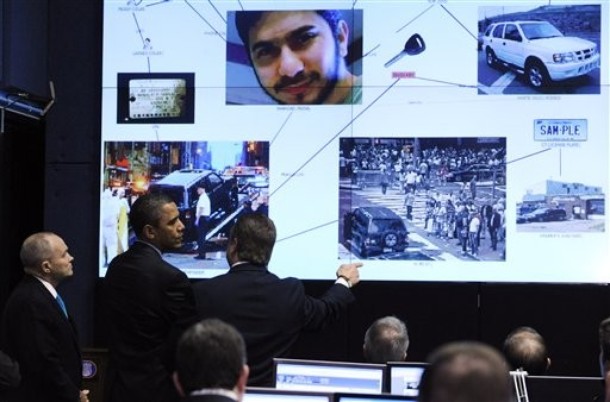
Why Faisal Shahzad, the Times Square attempted bomber, decided to mount the terrorist attack against his adopted country has been the subject of a great deal of speculation in the two weeks since it occurred. Most of the analysis has not been very helpful, filled with the kinds of platitudes that run through the terrorism literature on radicalization. When I saw the first identification of Shahzad as a Pakistani from the tribal areas, my question was, Is he a Pashtun? And if he is, what does that mean for the future of American efforts in Afghanistan.
The New York Times, in its May 15, 2005 online edition (Andrea Elliott, Sabrina Tavernise, and Anne Barnard, “For Car Bomb Suspect, a Long Road to Times Square”) has run an extensive view of the process that turned an apparently highly westernized Pakistani from a naturalized American citizen to an Islamic terrorist. The article does not add anything to any affiliations Shahzad may have had with radical groups in Pakistan or the United States, but it does have two bits of information that may be relevant to how we think about him and his connection to our efforts in the area.
The first bit of information is the identification of Shahzad as a Pashtun. The reference is virtually offhand, as if everyone knew this and thus it needed no elaboration or confirmation. It struck me as slightly odd in the sense that no place else is this identification made. Does nobody but me think it is important that the radicalization of Pashtuns is important to the United States? The second bit of information was that Shahzad had apparently asked his father’s permission to join the Taliban fighting in Afghanistan last year (against, of course, his adopted countrymen). His father, a decorated retired Pakistani fighter pilot, apparently vetoed this idea. The important point here is that Shahzad made the request, suggesting that his Pashtun background led him to adopt an anti-U.S. position for which he was apparently willing to fight and possibly die.
Is the fact that this latest attack on the United States was committed by a member of the Afghan/Pakistani tribe that the U.S. must coopt to be successful in Afghanistan important? Too much, of course, can be made of a single instance, and thus one should be wary of overgeneralizing. At the same time, could the conversion of Mr. Shahzad be a harbinger of things to come?
This question gains context in the long-held justification of the war that “we are fighting the extremists in Afghanistan so we don’t have to fight them here.” Mr. Shahzad’s case seems to offer a different dynamic. Rather, it suggests the counter-dynamic that our efforts in Afghanistan may create the kinds of resentment that causes people in Afghanistan to come here and attack us, a motivation that they might not hold if we were not there roiling their politics. The levels of civilian casualties the U.S. military is trying to attenuate there may, in this view, actually be creating a resentment that manifests itself in radicalism and the conversion to terrorism that might not be present if we were not killing Afghan civilians, notably Pashtuns.
One case does not allow one to say that American efforts against the Afghan and Pakistani Pashtuns are creating a terrorist movement that will attempt to move to American soil. That said, two observations can be made to throw into the general discussion of Afghanistan policy. One is that U.S. actions may not be so obviously anti-terrorist as they seem, if their effect is to radicalize people (in this case Pashtuns) against us. I hope Faisal Shahzad is the only Pashtun sufficiently radicalized to follow such a path, but I (and the reader) cannot be sure. The second is more of a question: were the United States to remove itself as an irritant in Pashtun existence, might that not have a calming effect that might lessen, rather than increase, the U.S. terrorism problem?
Maybe, maybe not. It’s at least worth thinking about, however.
Donald M. Snow, Professor Emeritus at the University of Alabama, is the author of over 40 books on foreign policy, international relations and national security topics. This essay was originally published at his blog What After Iraq? Photo credit: AP Photo.
Image: 610x_4.jpg
